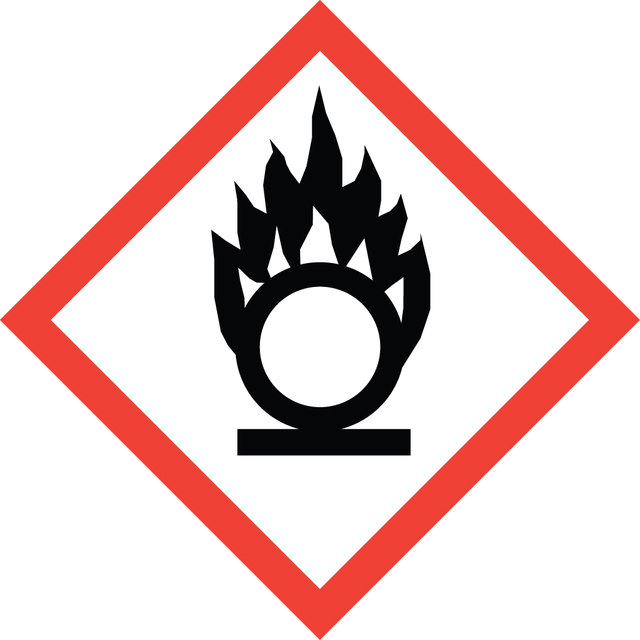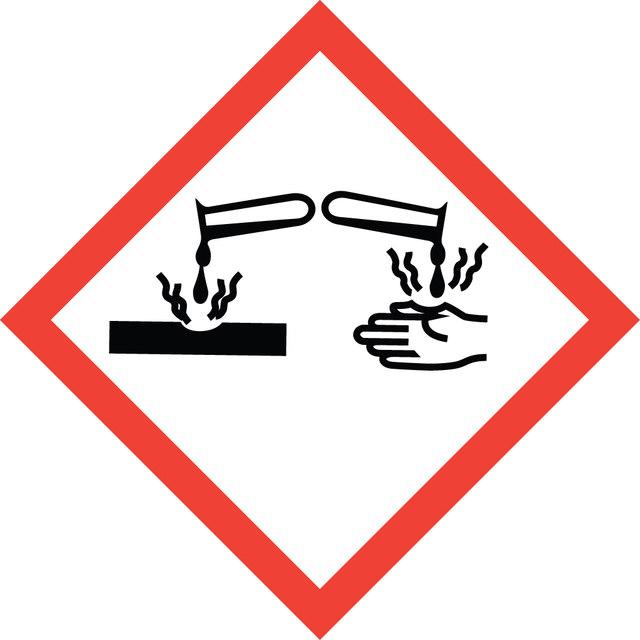等级
anhydrous
质量水平
方案
≥99.9% trace metals basis
表单
powder
反应适用性
core: lithium
环保替代产品特性
Design for Energy Efficiency
Learn more about the Principles of Green Chemistry.
sustainability
Greener Alternative Product
杂质
≤1000 ppm (trace metals analysis)
pH值(酸碱度)
6.0-7.5 (25 °C, 5%, aq.sol.)
mp
236 °C (lit.)
溶解性
H2O: 59.8 g/dL at 25 °C
痕量阴离子
chloride (Cl-): ≤30 ppm
sulfate (SO42-): ≤10 ppm
痕量阳离子
Fe: ≤5 ppm
heavy metals: ≤10 ppm
应用
battery precursors
catalysts
material synthesis precursor
环保替代产品分类
SMILES字符串
[Li+].[O-]Cl(=O)(=O)=O
InChI
1S/ClHO4.Li/c2-1(3,4)5;/h(H,2,3,4,5);/q;+1/p-1
InChI key
MHCFAGZWMAWTNR-UHFFFAOYSA-M
正在寻找类似产品? 访问 产品对比指南
一般描述
Anhydrous lithium perchlorate is a white-to-colorless crystalline salt. It is hygroscopic and deliquescent and usually stored under inert atmosphere. It is highly soluble in water and soluble in a variety of organic solvents including alcohols, acetone, acetonitrile, ethyl acetate, ethers, carbonates, and other polar organic solvents. Lithium perchlorate is a strong oxidizing agent.
Industrially, lithium perchlorate is manufactured in several ways. Most commonly, it is prepared from sodium perchlorate through a metathesis reaction with lithium chloride or lithium carbonate. Lithium perchlorate can also be prepared by direct electrochemical oxidation of lithium chloride or by reacting lithium carbonate with perchloric acid. The hydrate can be dried either by highly controlled heating or by displacing water with volatile amines, which are removed by drying under vacuum.
Industrially, lithium perchlorate is manufactured in several ways. Most commonly, it is prepared from sodium perchlorate through a metathesis reaction with lithium chloride or lithium carbonate. Lithium perchlorate can also be prepared by direct electrochemical oxidation of lithium chloride or by reacting lithium carbonate with perchloric acid. The hydrate can be dried either by highly controlled heating or by displacing water with volatile amines, which are removed by drying under vacuum.
We are committed to bringing you Greener Alternative Products, which adhere to one or more of The 12 Principles of Greener Chemistry. This product has been enhanced for energy efficiency. Click here for more information.
应用
The primary application of lithium perchlorate is as an electrolytic salt in lithium-ion batteries. Many of the early, now-famous reports of lithium batteries used lithium perchlorate dissolved in polar organics as the electrolyte and the salt remains popular because of its high solubility, electrochemical stability, and low cost. In the search for solid electrolytes, lithium perchlorate (5-12 wt%) is often added to polyethylene oxide (PEO) and composited with ceramic nanoparticles like LLZO and LATP .
Researchers also use lithium perchlorate as an electrolytic salt in aqueous media when testing electrocatalysts. For example, recent experiments improving the electrochemical reduction of nitrogen over TiO2 nanoparticles or gold nanoparticles use aqueous lithium perchlorate as the electrolyte.
Researchers also use lithium perchlorate as an electrolytic salt in aqueous media when testing electrocatalysts. For example, recent experiments improving the electrochemical reduction of nitrogen over TiO2 nanoparticles or gold nanoparticles use aqueous lithium perchlorate as the electrolyte.
包装
100g in poly bottle
500g in poly bottle
500g in poly bottle
警示用语:
Danger
危险分类
Acute Tox. 4 Oral - Eye Dam. 1 - Ox. Sol. 2 - Skin Corr. 1A - STOT SE 3
靶器官
Respiratory system
储存分类代码
5.1A - Strongly oxidizing hazardous materials
WGK
WGK 1
闪点(°F)
Not applicable
闪点(°C)
Not applicable
法规信息
危险化学品
易制爆化学品
此项目有
Electrochemical and In Situ X?Ray Diffraction Studies of Lithium Intercalation in Lix CoO2
Reimers, J.N., et al.
Journal of the Electrochemical Society, 139, 2091-2091 (1992)
The spinel phase of lithium manganese oxide (LiMn2O4) as a cathode in secondary lithium cells
Tarascon, J.M., et al.
Journal of the Electrochemical Society, 138, 2859-2864 (1991)
Mohammadreza Nazemi et al.
The journal of physical chemistry letters, 9(17), 5160-5166 (2018-08-25)
An electrochemical nitrogen reduction reaction (NRR) could provide an alternative pathway to the Haber-Bosch process for clean, sustainable, and decentralized NH3 production when it is coupled with renewably derived electricity sources. Developing an electrocatalyst that overcomes sluggish kinetics due to
Tongwei Wu et al.
Angewandte Chemie (International ed. in English), 58(51), 18449-18453 (2019-09-25)
Titanium-based catalysts are needed to achieve electrocatalytic N2 reduction to NH3 with a large NH3 yield and a high Faradaic efficiency (FE). One of the cheapest and most abundant metals on earth, iron, is an effective dopant for greatly improving
Ting Yang et al.
ACS applied materials & interfaces, 9(26), 21773-21780 (2017-06-10)
Composite polymer solid electrolytes (CPEs) containing ceramic fillers embedded inside a polymer-salt matrix show great improvements in Li+ ionic conductivity compared to the polymer electrolyte alone. Lithium lanthanum zirconate (Li7La3Zr2O12, LLZO) with a garnet-type crystal structure is a promising solid
我们的科学家团队拥有各种研究领域经验,包括生命科学、材料科学、化学合成、色谱、分析及许多其他领域.
联系客户支持

